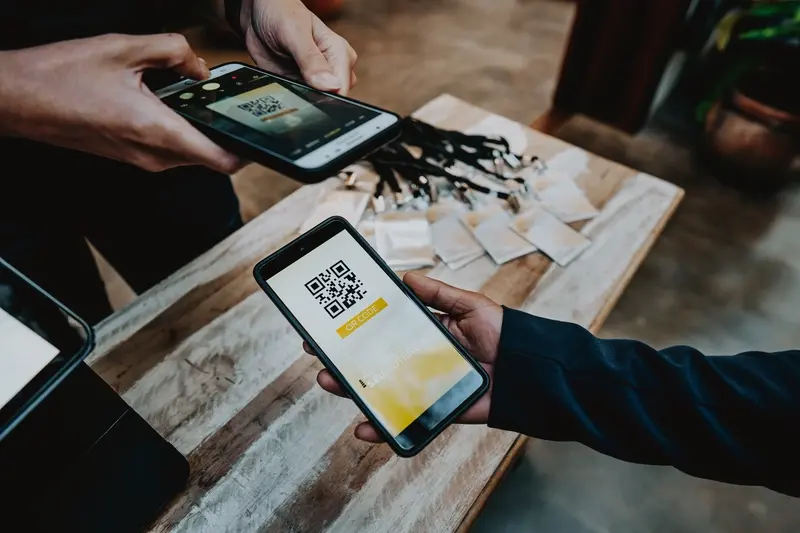Should My Event App Work for Both Virtual and in-Person Events?
Event organisers today face a tricky decision when it comes to their mobile apps. The events industry has shifted dramatically—some people prefer attending virtual events from their living room, others miss the energy of in-person gatherings, and many want both options available. This leaves you wondering whether to build separate apps for different event types or create one flexible solution that handles everything.
The question isn't just about technology; it's about understanding your audience and predicting where the industry is heading. Virtual events exploded in popularity and aren't going anywhere—they offer convenience, lower costs, and global reach. In-person events are making a strong comeback as people crave real human connection and networking opportunities. Then there are hybrid events, which blend both approaches and create entirely new challenges.
The most successful event apps are the ones that adapt to how people actually want to engage, not how we think they should engage
Building one app that works for virtual events, in-person events, and hybrid events sounds logical on paper. You maintain one codebase, reduce development costs, and give users a consistent experience. But the reality is more complex—each event type has unique requirements, user behaviours, and technical demands. Virtual attendees need seamless video streaming and chat features, whilst in-person attendees want maps, networking tools, and offline functionality. Getting both right in a single app requires careful planning and significant technical expertise.
Understanding Virtual Events
Virtual events have completely changed how we think about bringing people together. Instead of booking venues and worrying about catering, everything happens online through apps, websites, and streaming platforms. Attendees join from their homes, offices, or wherever they happen to be—all they need is an internet connection and a device.
The shift to virtual wasn't just about convenience; it opened doors that were previously shut. People who couldn't travel due to budget constraints, time limitations, or accessibility issues suddenly had access to conferences and workshops they'd never have attended otherwise. From a business perspective, this meant reaching audiences across different continents without the massive costs of physical venues.
What Makes Virtual Events Tick
Virtual events rely heavily on technology to recreate the experience of being there in person. They need live streaming capabilities, chat functions for real-time interaction, and ways for attendees to network with each other. The best virtual events don't just broadcast content—they create genuine engagement through polls, Q&A sessions, and breakout rooms.
The technology requirements are quite different from traditional events. You need reliable servers that can handle hundreds or thousands of simultaneous connections, high-quality video streaming, and interactive features that keep people engaged when they're sitting at home with countless distractions nearby.
Key Features Virtual Events Need
- Live streaming with high-quality video and audio
- Interactive chat and messaging systems
- Virtual networking spaces or breakout rooms
- Digital content sharing and downloads
- Attendance tracking and analytics
- Technical support for participants
The beauty of virtual events lies in their scalability and accessibility, but they also present unique challenges in keeping audiences engaged when they're not physically present in a room together.
Understanding In-Person Events
In-person events are what most of us think of when we hear the word "event"—people gathering in the same physical space at the same time. Whether it's a conference in a hotel ballroom, a trade show at an exhibition centre, or a corporate meeting in an office, these events rely on face-to-face interaction and shared experiences.
The magic of in-person events lies in spontaneous conversations. You know those moments when you bump into someone in the coffee queue and end up having the best discussion of the day? That doesn't happen with virtual events. People can network naturally, attend breakout sessions together, and build relationships that often last long after the event ends.
What Makes In-Person Events Special
Physical events create an atmosphere that's hard to replicate online. The energy in a room when a great speaker takes the stage, the buzz of conversation during networking breaks, and the ability to read body language during discussions—these elements make in-person events powerful for building connections and sharing knowledge.
From a practical standpoint, in-person events need apps that work seamlessly in venues that might have patchy WiFi or crowded mobile networks. Your app needs to handle hundreds of people trying to access schedules, maps, and attendee lists all at once, often in locations with challenging connectivity.
Design your in-person event app to work offline where possible. Attendees shouldn't lose access to schedules or contact information just because the venue's WiFi is struggling with the crowd.
The App Requirements Are Different
In-person events demand features like interactive venue maps, session check-ins, and real-time updates about room changes. Your app becomes a digital companion that enhances the physical experience rather than replacing it.
The Rise of Hybrid Events
Let's be honest—hybrid events weren't really a thing until the world got turned upside down and event organisers had to get creative fast. One day everyone was planning massive conferences in hotels; the next day they were scrambling to figure out how to livestream everything whilst still keeping some people in the room.
But here's what's interesting: hybrid events have stuck around because they actually solve problems that existed long before anyone had heard of lockdowns. Think about it—how many times have you wanted to attend a conference but couldn't because of travel costs, timing conflicts, or simply not wanting to spend three days away from home? Hybrid events give people options, and people love having options.
What Makes Hybrid Events Different
A hybrid event isn't just slapping a camera in front of a speaker and calling it done. It's about creating two distinct but connected experiences that feel intentional. Your in-person attendees might be networking over coffee and asking questions directly to speakers, whilst your virtual attendees are participating in live polls and watching from their kitchen table—and both groups need to feel like they're part of the same event.
Why Event Organisers Are Embracing This Model
The numbers don't lie—hybrid events can dramatically increase attendance. You're no longer limited by venue capacity or geographical boundaries. That expert speaker from Australia can present to your London-based audience without anyone getting on a plane. Plus, you can record sessions for people who couldn't make it live, extending the life of your content well beyond the event date. It's becoming less about choosing between virtual or in-person, and more about offering both to maximise your reach and impact.
Benefits of Building One App for All Event Types
Building a single app that handles virtual events, in-person events, and hybrid events makes perfect sense when you think about it practically. Your attendees get one familiar interface they already know how to use—whether they're joining from their sofa or walking around a conference centre. That consistency alone saves you loads of headaches and support tickets.
From a business standpoint, maintaining one codebase instead of three separate apps cuts your development costs dramatically. Updates happen once, bugs get fixed once, and new features roll out to everyone at the same time. Your development team will thank you for this approach, trust me.
Brand Consistency Across All Events
Your brand stays consistent no matter what type of event you're running. The same colours, fonts, and user experience flow through whether someone's attending virtually or in person. This builds stronger brand recognition and makes your organisation look more professional and polished.
A unified app approach means your attendees never have to learn a new system—they just show up and know exactly what to do
Future-Proofing Your Investment
Event formats keep evolving, and hybrid events are becoming the norm rather than the exception. Building one flexible app means you're ready for whatever comes next without starting from scratch. You can pivot between event types based on circumstances, audience preferences, or budget constraints without losing your technical investment.
The data collection benefits are massive too—you get a complete picture of attendee behaviour across all event formats. This helps you make better decisions about future events and understand what works best for different types of content or audiences.
Challenges You'll Face with Multi-Purpose Event Apps
Building an app that works brilliantly for both virtual and in-person events sounds perfect in theory—but the reality is a bit more complicated. I've worked on plenty of these projects over the years, and whilst they can be incredibly successful, they do come with their own set of headaches that you need to be prepared for.
The biggest challenge is trying to satisfy two completely different user experiences without making either one feel like an afterthought. Virtual attendees need seamless video streaming, chat functionality, and easy navigation between sessions. Meanwhile, in-person guests want maps, networking features, and real-time updates about venue changes. When you try to cram all these features into one app, things can get messy quickly.
Key Technical Challenges
Your development team will need to tackle some serious technical hurdles:
- Managing different data loads—virtual events often have thousands of simultaneous users streaming content
- Offline functionality for in-person attendees who might have poor venue WiFi
- Complex user interface design that adapts to different event types
- Integration with multiple third-party services for streaming, networking, and venue management
- Testing across various scenarios—you can't just test one type of event
User Experience Complications
From a user perspective, multi-purpose apps can feel overwhelming. People attending a virtual conference don't want to see venue maps cluttering their interface, and in-person attendees get frustrated scrolling past streaming options they can't use. The key is creating an interface that intelligently shows relevant features based on event type—but that's easier said than done.
Budget is another consideration. These apps typically cost 30-50% more to develop than single-purpose alternatives because of the additional complexity and testing required.
Technical Requirements for Flexible Event Apps
Building an app that handles virtual events, in-person events, and hybrid events isn't just about good intentions—it's about having the right technical foundation. I've worked on plenty of event apps over the years, and the ones that truly work across all formats share some common technical traits.
Your backend needs to be rock solid. We're talking about a system that can handle thousands of people streaming video content whilst simultaneously managing check-ins, live polls, and networking features. Cloud infrastructure becomes your best friend here—services like AWS or Google Cloud can scale up during your big moments and scale down when things are quieter.
Core Technical Components
Real-time communication sits at the heart of flexible event apps. WebRTC handles peer-to-peer connections for video calls, whilst WebSocket connections manage live chat and instant updates. Your database architecture needs to support both real-time data (like live reactions) and persistent data (like attendee profiles and session recordings).
Build your app with offline capability from day one. Even in-person events can have patchy WiFi, and you don't want attendees missing out because of connectivity issues.
- Video streaming infrastructure with adaptive bitrate
- Real-time messaging and notification systems
- QR code scanning for check-ins and networking
- Location services for venue navigation
- Push notification system for all event types
- Analytics tracking across virtual and physical interactions
- Content delivery network for global reach
Integration Planning
Your app will need to talk to other systems. Payment gateways for ticket sales, CRM systems for attendee data, and streaming platforms for video content. Plan these integrations early—they often take longer than expected and can make or break your launch timeline.
Conclusion
So here we are at the end of our journey through the world of multi-purpose event apps. After working with event organisers for years, I can tell you that the question of whether to build one app for all event types isn't straightforward—but that doesn't mean it's impossible to answer.
The reality is that most event organisers will benefit from having a single, flexible app that can handle both virtual and in-person events. The cost savings alone make it worth considering, not to mention the reduced complexity of managing multiple platforms. Your attendees get familiar with one interface, your team learns one system, and you build a stronger brand presence over time.
But—and this is a big but—only if you're willing to invest in doing it properly. A half-hearted attempt at building a multi-purpose app will leave you with something that's mediocre at everything rather than excellent at anything. The technical requirements aren't trivial, and you'll need to think carefully about user experience design.
If you're running very specific event types with unique requirements, separate apps might make more sense. A medical conference has different needs than a music festival, and sometimes those differences are too significant to bridge with one solution.
The key is being honest about your needs, your budget, and your technical capabilities. Don't build a Swiss Army knife when you need a scalpel, but don't build five different tools when one flexible solution would serve you better.
Share this
Subscribe To Our Learning Centre
You May Also Like
These Related Guides

Should My Event Management App Include Social Features For Networking?

How to Create an Event App That Delights Both Organisers and Attendees



